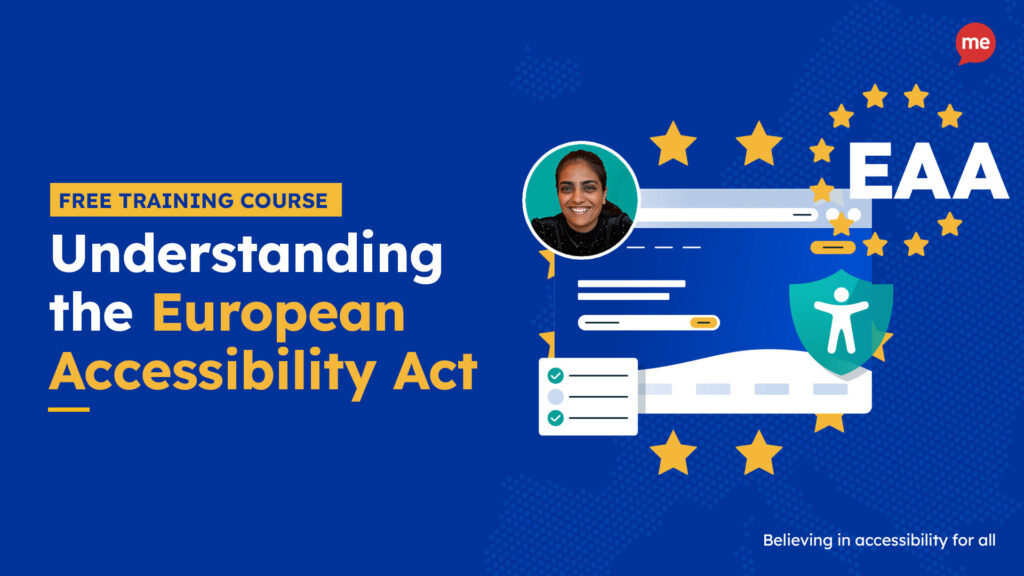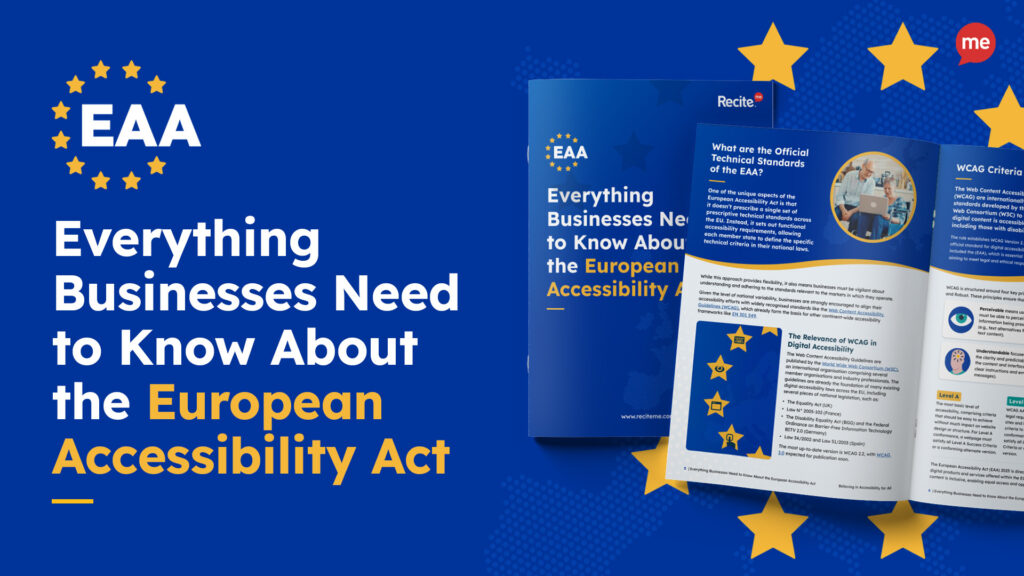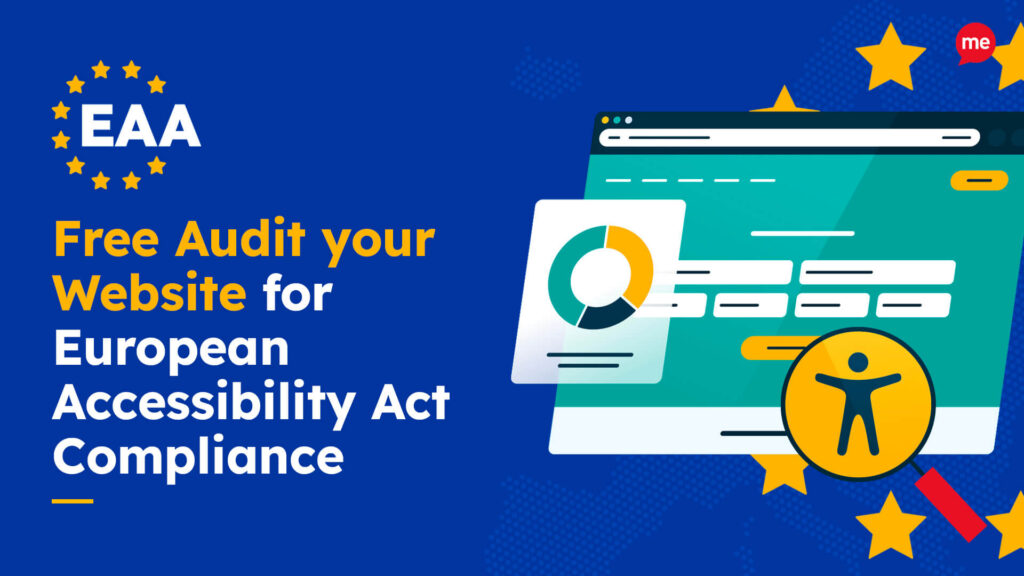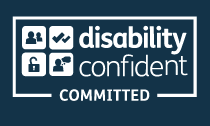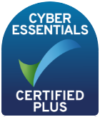Get Your Free European Accessibility Act Checklist
Download NowWith 16% of persons aged 16-64 living with a disability in Sweden, the demand for accessible products and services is higher than ever. The European Accessibility Act (EAA) serves this demand by enshrining in law the need for Swedish businesses to offer accessible products, services, and information online. If you’re a Swedish business owner, and you’re wondering if the EAA applies to you, or how you should go about complying, this guide has everything you need to know.
What is the European Accessibility Act (EAA)?
The European Accessibility Act (EAA) is a directive from the European Union (EU) which makes being accessible a legal requirement for both public sector organisations and private businesses in Sweden.
Although the bill was passed in 2019, the first compliance deadline for Swedish companies was June 28, 2025. This means that all new content is required to be fully accessible, while pre-existing content must comply with accessibility standards by June 28, 2030.
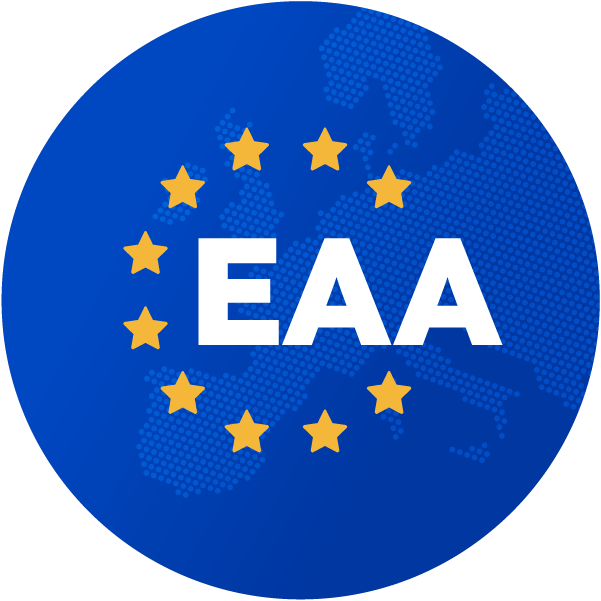
Ultimately, the EAA aims to standardise accessibility laws and expectations across a wide range of sectors in the EU member states. For those in the digital world, this means making sure things like websites, mobile applications, and online documents can be effectively navigated by individuals with physical, sensory, or cognitive impairments.
Checking for EAA compliance is now easier than ever. At Recite Me, we offer a free website audit to spot any issues related to the European Accessibility Act and WCAG. You’ll get a clear action plan to help improve your website’s accessibility and meet EAA compliance.
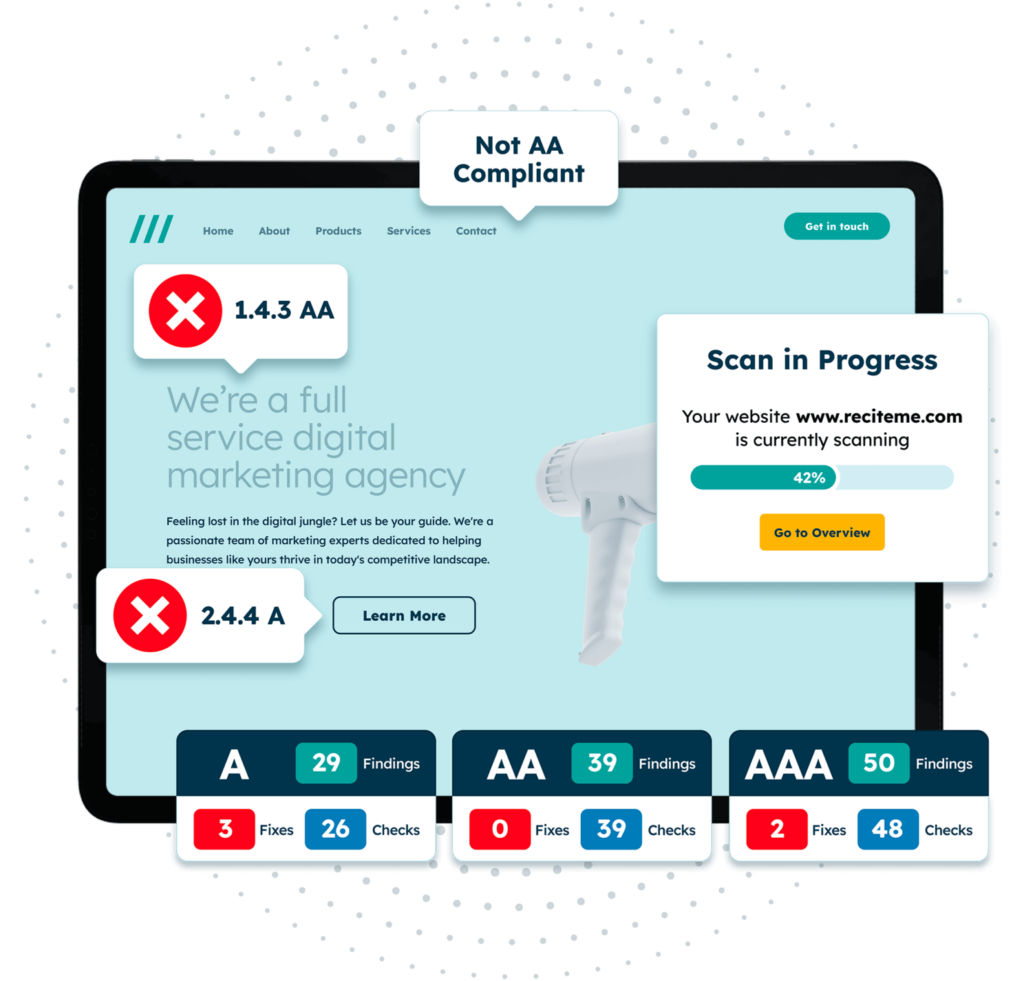
Which Swedish companies does the European Accessibility Act apply to?
The EAA and its requirements apply to almost every business in Sweden. So long as your business trades within the EU and meets either of the following criteria, the EAA applies to you:
- 10+ employees
- €2,000,000+ annual turnover
So, it seems that only microenterprises are excluded from the implications of the EAA. With that said, microenterprises can still opt to comply with the EAA. In fact, doing so will not only help prepare them for the future, but is sure to bring about significant business benefits, broadening their customer reach and giving them an edge over non-compliant competitors.
As you can see, the EAA has very few exceptions. This broad applicability covers sectors from eCommerce and finance to transportation and media, compelling companies of all kinds to implement healthy accessibility adjustments.
Accessibility laws relevant to EAA compliance in Sweden
The EAA serves as a powerful legal tool, standardising accessibility laws across all EU member states. However, the EAA alone doesn’t provide much guidance for Swedish businesses on how to comply or what they need to comply with. That’s where regulations like the Swedish Discrimination Act and the Web Content Accessibility Guidelines (WCAG) come in. They act as the operationalising arm of the EAA, providing much needed direction to Swedish companies.
Web Content Accessibility Guidelines (WCAG)
The Web Content Accessibility Guidelines (WCAG) are a globally recognised set of standards designed to make web content more accessible to individuals with disabilities. The WCAG sets out specific accessibility requirements according to three levels of compliance (Level A, AA, and AAA), where Level A is the most basic form of compliance and Level AAA the most stringent.
Consider colour contrast, for example. The WCAG dictates that to achieve Level AA compliance, website elements must possess a minimum contrast ratio of 4.5:1 for normal text. Whereas, to achieve Level AAA compliance, the minimum contrast ratio is a much more demanding 7:1.
The EAA measures accessibility against these global standards, requiring that a minimum of WCAG 2.1 Level AA is maintained. In this way, the legal requirements of the EAA are achieved by adhering to the WCAG; the EAA sets the rules and the WCAG is the instruction manual for complying with those rules.

Swedish Discrimination Act (Diskrimineringslagen)
Sweden has long prioritized accessibility and inclusion as part of its commitment to equality, particularly through legislation like the Swedish Discrimination Act (Diskrimineringslagen). This piece of legislation prohibits discrimination on the basis of things like, gender, ethnicity, religion, age, sexual orientation, etc.
In the workplace, discrimination may look like giving one employee worse benefits than another because of their gender, or treating them differently because of their age. Also covered in the act is indirect discrimination, bullying, and lack of accessibility.
Ultimately, the Swedish Discrimination Act compliments the objectives of the EAA by broadening its scope beyond just accessibility. Coupled together, the two laws strengthen Sweden’s efforts to create a more accessible, inclusive, and equal society.
Significant requirements for becoming compliant with the European Accessibility Act in Sweden
When it comes to complying with the EAA, Swedish businesses have a lot of ground to cover, which can be daunting. This section breaks down the majority of the EAA’s requirements into a few key areas that apply to most organisations.
Digital Accessibility
Digital accessibility involves making online content, mobile apps, and digital platforms navigable and usable for people with disabilities. Take alt text as an example. All website images should have alt text embedded, which describes the contents of the images clearly and concisely.
The alt text of a product image on an ecommerce site, for example, might read something like “red leather wallet with gold zipper”, accurately describing what the wallet looks like without overwhelming the reader. Screen readers can then read this description to users with visual impairments, allowing them to browse products which they would not have otherwise been able to. Alt text is just one of many examples of digital accessibility.
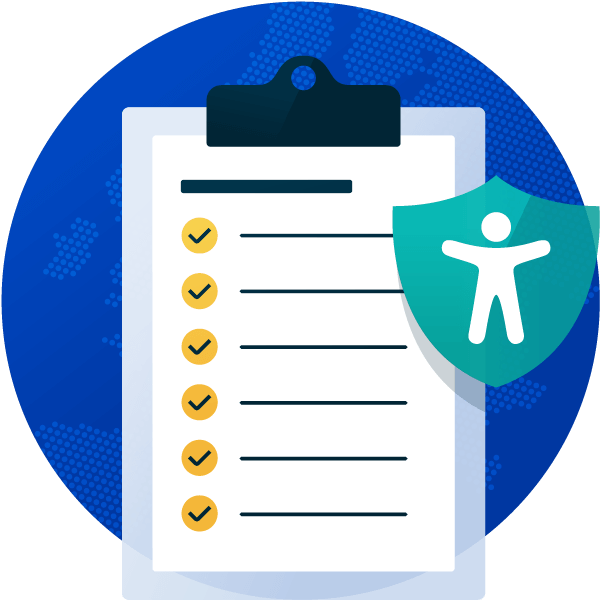
Accessible Information and Communication
The EAA requires accessible formats for information, ensuring that people with disabilities can comprehend and interact with the content provided. Whether it’s instructional material, customer service information, or general product information, businesses should offer multiple formats, such as large print, braille, or audio options, to meet various needs.
Clear, readable fonts and appropriate colour contrast should be used throughout all emails and PDF documents. Language should be simple, clear, and free of any technical jargon. And any scanned images of text should be made searchable using Optical Character recognition (OCR) technology.
Customer Support
The EAA also highlights the need for accessible customer support. This involves making sure that all users, including those with disabilities, have the means and access to receive assistance through various channels.
This mostly comes down to the formats of communication provided. For example, an individual with speech or hearing impairments is not able to converse effectively over the phone and will therefore struggle to get the support they need unless alternative, text-based formats are also provided. Offering live chat functions, emails, or even in-person meetings are all great ways to ensure everyone has access to customer support services.
Potential consequences of non-compliance with EAA standards in Sweden
Failing to comply with the EAA in Sweden can impact your business in more ways than you might think, leading to a domino effect of negative consequences if left unchecked. Below, we outline key risks companies face if they fail to meet EAA standards, underscoring the importance of following accessibility best practices.
Legal penalties
Non-compliance with EAA standards can result in legal action against companies, brought about by advocacy groups or individuals who have faced inaccessibility. Such legal action often leads to costly EAA-related fines and legal bills. Swedish businesses found in violation of EAA requirements may face penalties of up to €200,000 with required accessibility audits and corrective action.
Damage to reputation and brand
Money aside, legal battles associated with EAA non-compliance can bring with them some serious reputational damage. Consumers increasingly prioritise businesses that demonstrate inclusivity, and all it might take is knowing that your brand has been involved in a legal case to deter a potential customer. If found guilty of non-compliance, this could instil a public perception of your business so negative that it can be almost impossible to bounce back from.
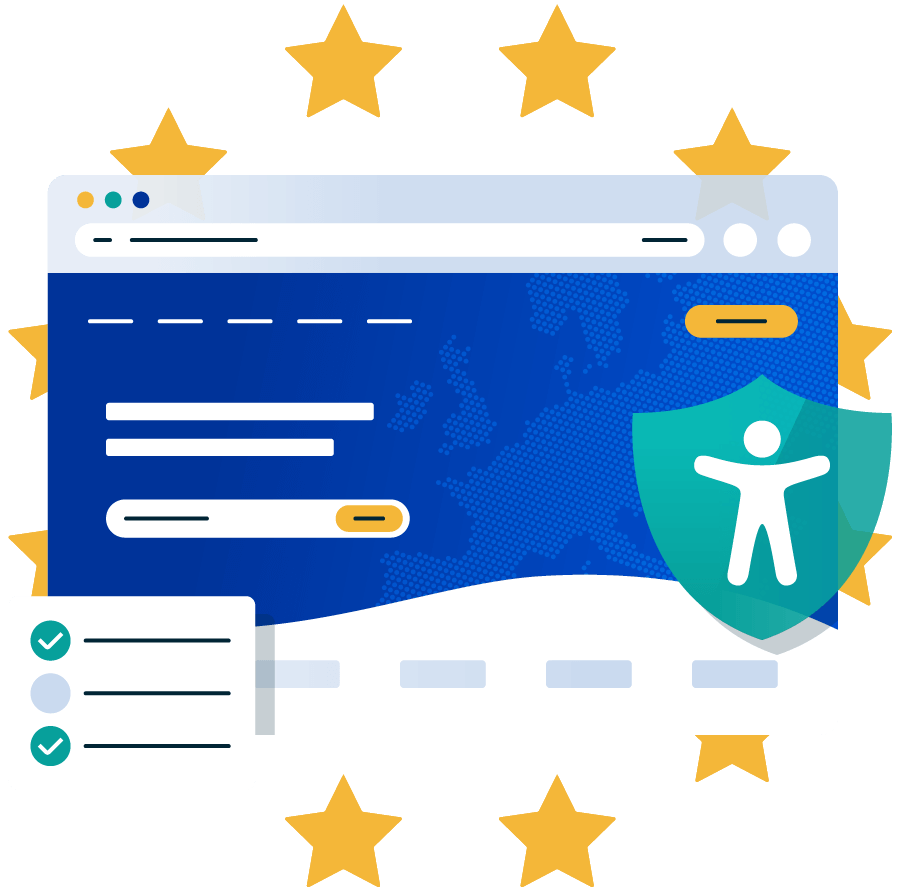
Lost revenue opportunities
By not meeting accessibility standards, Swedish businesses risk excluding the millions of disabled internet users out there, cutting themselves off from an entire pool of otherwise potential customers. By failing to make your business accessible, you’re not only excluding disabled customers, but their families, friends, and caregivers. This can add up to significant lost revenue, especially if competitors are meeting the accessibility needs that you aren’t.
Customer churn
Poor accessibility leads to lower satisfaction rates among customers with disabilities. Even if they can use your company’s products and services, their overall experience is hindered. As a result, they may feel like they have no choice but to leave, turning to more inclusive competitors instead.
Make sure your website meets the European Accessibility Act with our easy-to-follow EAA checklist. It covers all the key steps to get compliant before the deadline and helps you avoid penalties. Get started today!
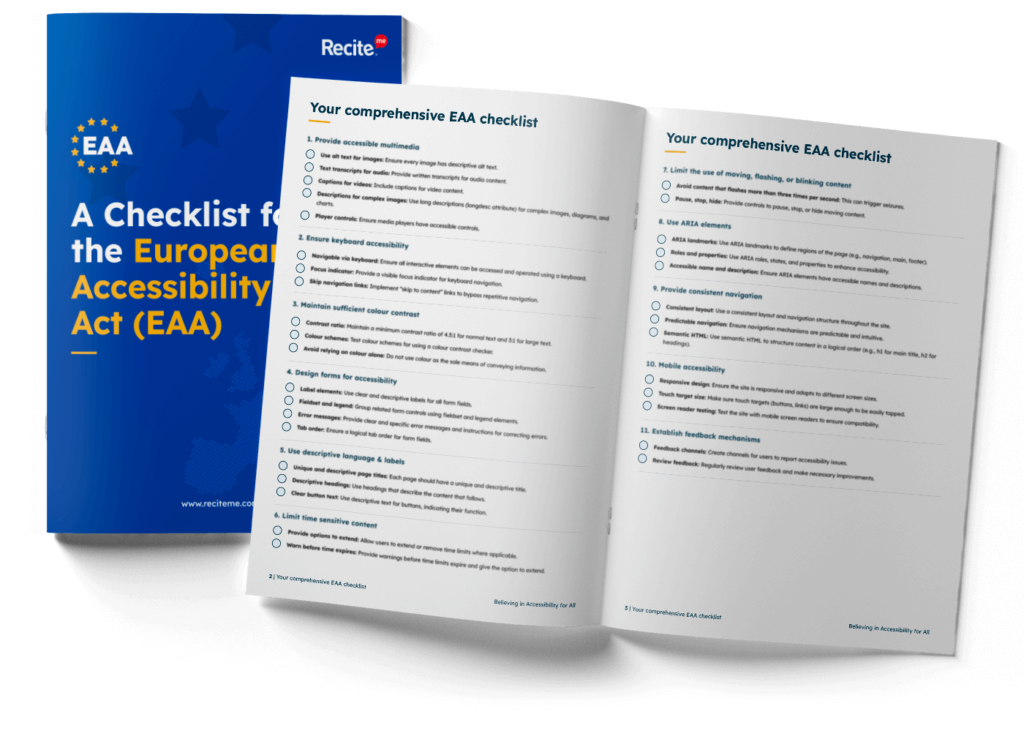
How to make your Swedish website EAA compliant
To avoid penalties and align with best practices in digital accessibility, Swedish businesses should take proactive steps to becoming EAA compliant. But how exactly can you do this? This section outlines the process for you, step by step.
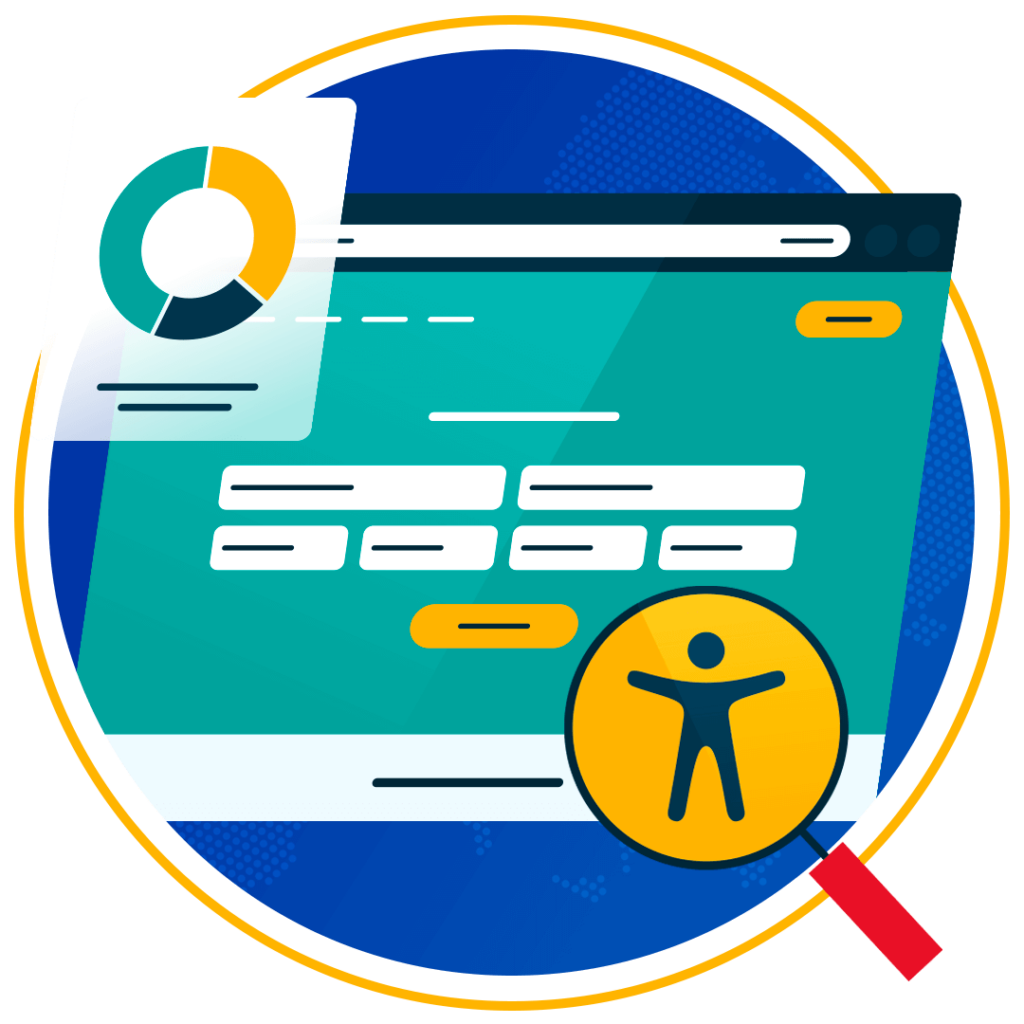
Conduct an accessibility audit
Before making any accessibility adjustments, you’ll need to gain a good understanding of your organisation’s current level of accessibility. An audit will help you understand what needs improving and how to get there. Automated tools, like Recite Me’s accessibility checker, offer rapid scans of your website according to WCAG standards, quickly identifying areas of non-compliance and compiling the results in report format with recommendations for improvement.
Implement WCAG guidelines
Once you’ve identified areas where accessibility could be improved, the next step is to action these improvements. Follow any guidance issued as part of your audit and begin implementing WCAG Level AA standards across all web elements, including images, forms, written content, and multimedia. Kickstart your journey to implementing these changes with the European Accessibility Checklist.
Run regular accessibility test
Achieving accessibility is one thing, but maintaining accessibility is a whole other process. At the very least, audits should be conducted after every major website adjustment or when WCAG updates are released. This helps catch inaccessible features as and when they arise, making it easier to maintain EAA compliance and provide a consistent user experience over time.
Think of accessibility testing in the same way as you would a health check up; it’s better to do them regularly and before symptoms start to arise. After all, regular audits form the basis of a preventative proactive approach to accessibility.
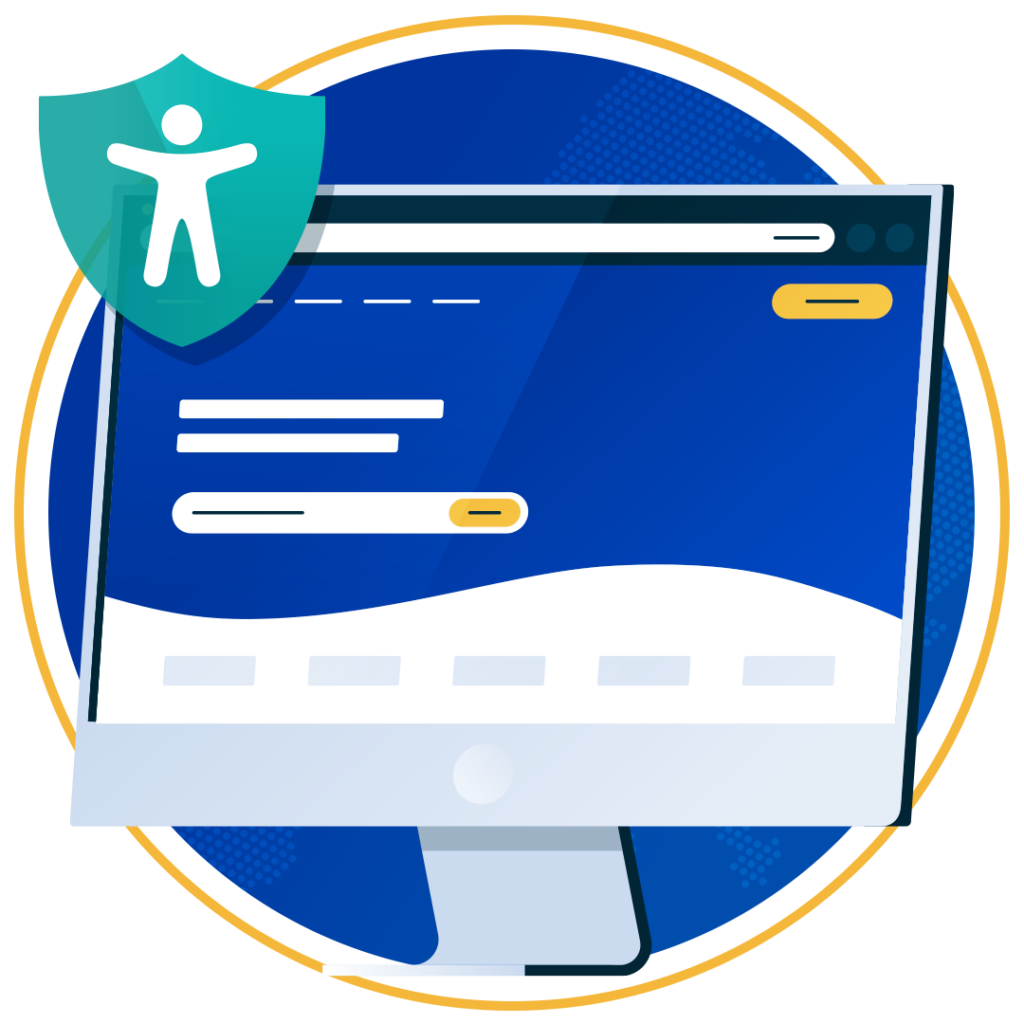
Employee training
Last but not least, you need to train your team. Doing so helps embed inclusive practices into every aspect of your business. Consider running tutorials on conducting manual accessibility audits, offering WCAG refresher courses, or bringing in third-party experts to discuss the importance of accessibility and EAA compliance. Training your staff, especially those in teams related to HR and web development, helps ensure accessibility remains a priority at every level of your organisation.
You can download our free training course for the European Accessibility Act here.
Need more help becoming EAA compliant?
The following resources are packed full of actionable tips and expert advice for making your digital content compliant with the European Accessibility Act:
Free EAA Compliance Training
Take the first step to European Accessibility compliance by completing our EAA training course.
Free EAA Compliance Guide
Ensure your organisation is meeting the necessary requirements for European Accessibility Act compliance.
Free EAA Audit of your Website
Download a free accessibility check of your website. This report will highlight any EAA non-compliance and how to fix it.

